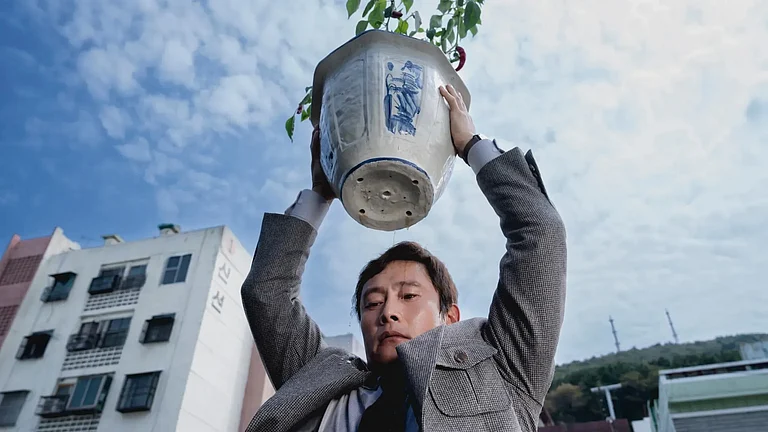From this corner of the world where the thumba flower doesn’t bloom and Malayalam has dwindled into a language I speak inside my head, I fondly cast my gaze back to memories of Onam from a bygone era in Malabar. My atheist father had all but erased the rituals in our household, while my mother held fast to whatever traditions she could salvage. Thus, the Onam of my childhood was more a celebration of festivity than of ceremony. The ten-day festival would begin on the day marked by the Atham star in the Malayali calendar, reaching its climax on the tenth day with Thiruvonam.
The evening before Atham, our first task was to set up the 'onathara,' a raised platform of bricks and mud, carefully finished with a smooth coat of cow dung. This, in a symbolic sense, represented a place for the vanquished king Mahabali. Amidst the nightmare of our quarterly exams, we would eagerly gather flowers every evening—vibrant red hibiscus, pristine thumba, delicate blue-eyed crow flowers, and golden trumpet blooms—to adorn the flower carpet the next morning. The day of the festival was marked by the number of ‘flower umbrellas’ propped up each day—golden yellow trumpet flowers perched on a coconut leaf stick.
By the fourth or fifth evening, the ‘nari kali’ dancers would appear at our gate—men painted like tigers, moving in rhythm to the pulse of drums, cymbals, and folk songs, an exuberant burst of energy that brought the neighbourhood to life.
On the grand day of Thiruvonam, the ten yellow trumpet flowers in the flower carpet were loosely bound together with a golden white thread from a new kasavu mundu, the traditional attire. I never thought to ask my mother the meaning behind this ritual, but after all these years, I’ve come to believe it symbolised unity and togetherness. The feast served on banana leaves, featured an impressive array of about sixteen different dishes with a sweet starter of mashed plantain, ghee, sugar and papad. For the next three days, the flower carpet remained undisturbed, until a single tulsi leaf was placed upon it, marking the beginning of a new phase. For fourteen days, it stayed that way, only to be ceremoniously overturned with a generous spilling of payasam.
In the wake of many narratives that came later, I often found myself wondering where I stood in the grand mythological divide between Gods and Asuras in which Vishnu in his supreme avatar of Vamana tricked Mahabali into giving up his kingdom, granting him visitation rights to his people once a year. Perhaps the whole point lies in the generosity of heart and steadfastness to one’s word, even in the face of inevitable peril. Perhaps, in the interconnectedness of all things, there is a deeper truth—that, beyond pluralism and the many ideological battles that continue to fracture the world, there is a shared hope. It is this hope that keeps us grounded in our traditions while embracing the broader world—just as the ten golden yellow trumpet flowers were bound together by a simple golden white thread.


























